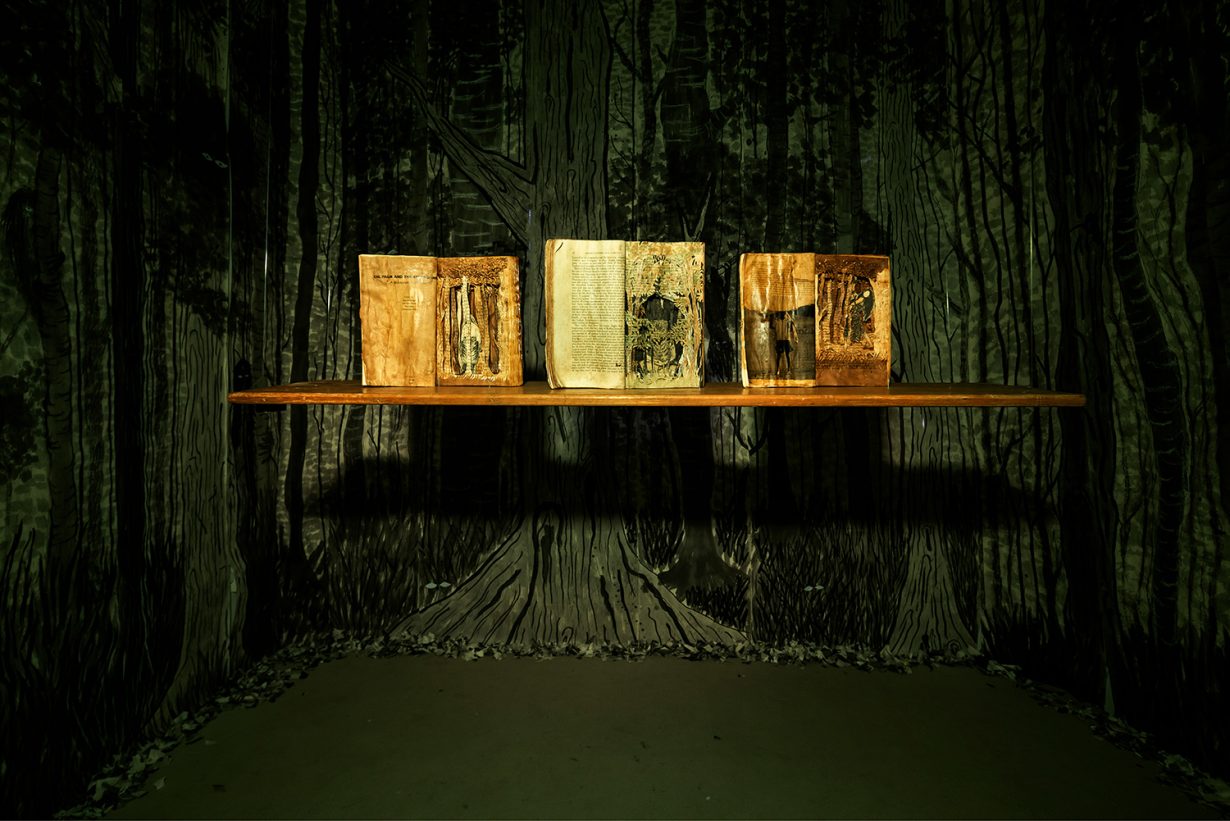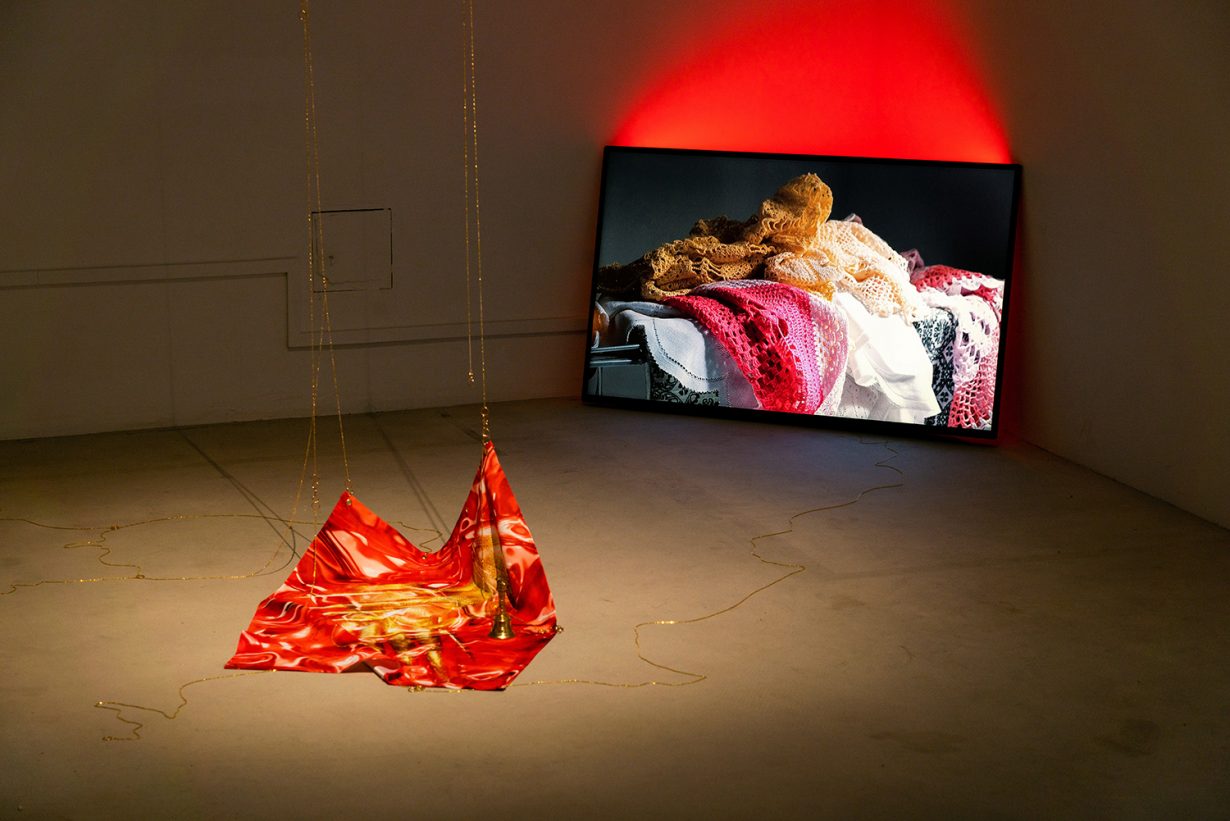A group show at Gillman Barracks, Singapore, fosters an atmosphere of relaxed vulnerability

In certain circles, telling someone to ‘grow a pair’ is a chastisement so last-century that you can turn it into something ambiguous and, in that sense, contemporary. Which is the case in Aki Hassan’s new series of three sculptures, titled Growing a Pair (all works 2021), where the exhortation loses its gendered toxicity and turns into an exploration of the process of growth and becoming. In one work, two bars form a tall inverted V, and joined at the bottom of one is a shorter curved bar, extending further to reach over a small mirror on the ground – a young appendage shyly examining its own reflection. In another work, a pair of balls look like they are literally being grown. Three skinny bars meet at a point, resembling a tripod pulled to its tallest height. Sitting in the crook where the bars meet is a white fleshy, sluglike form suggesting the titular pair, incubated in the airiest and most provisional of structures.
Knowing that Aki identifies as nonbinary and uses a gender-neutral pronoun makes it tempting to read the series autobiographically, as, for example, an extended metaphor for transition. But the openness of its compositions, comprising elements that are joined in unexpected ways yet somehow balance, points to a more general and creative mode of being.
The relaxed vulnerability of this work is consistent with the atmosphere of this group show curated by Fajrina Razak and Syaheedah Iskandar. According to the wall text, the exhibition is about ‘the imprint of knowledge(s) on our bodies’, especially ones that can’t be easily codified and transmitted via ‘mainstream pedagogical systems’. This exhibition seeks to provide such a nonmainstream space. Of course, you could argue that art in general is open to other dimensions of knowledge, like the emotional, experiential and intuitive. The difference here is that besides prioritising these ways of knowing, the show also deals exclusively with experiences from minority identities, such as queerness and brownness, as well as fringe experiences such as the paranormal and grief.

In Singapore, the art scene is seen as a liberal and progressive space – LGBTQ themes and identities are embraced, for example – but in my experience, racism and misogyny are less visible evils. This show, put together by brown women curators and featuring mostly brown women, is a welcome affirmative gesture. As a ciswoman of the majority race in Singapore, I found the show gently instructive and occasionally humbling, with places where I felt included (as a woman) and excluded (in the untranslated Malay in some works and titles).
Besides resembling a collegiate ‘safe space’ for marginal communities, the exhibition also feels like a homely gathering point for women of different generations. The minishowcase of work by senior artist and traditional healer Hamidah Jalil features four vibrant paintings of cultural artefacts she collected around Southeast Asia, as well as one of those artefacts itself: a measuring cup. As an addendum, the curators pinned up a text elucidating three Malay terms they learned from the artist. One of them is sengkak, a traditional womb-repositioning treatment that promotes health and fertility.
This goes to show that there are things that can be gleaned only from elders, not books. Where the stakes get higher is when the show deals with embodied and othered knowledge, which by definition is difficult or impossible to put across. The relevant artworks demonstrate various degrees of communicability. In the ‘take it or leave it’ camp is Priyageetha Dia’s oblique video installation, a ‘digital archive for the future’ featuring a series of moving-image impressions of Tamil identity, heritage and lived experience (Rite of the Time Teller). The work consists of unspecified footage shot in India, family photos, domestic rituals and a gold-painted, Madonna-like figure played by the artist. In contrast to this opacity is the exhaustive self-narration of ila’s videowork lupa. Among several things, the voiceover details a family story about the artist not knowing who her maternal grandfather is, a creation myth and the sensuous entanglement of all life. Accompanying this are illustrative shots of the forest and water, with the artist’s nude body embedded in those environments.

Courtesy Syaheedah Iskandar and Fajrina Razak
What both works have in common, though, is a certain temperate disposition: they talk about cognitive shifts without upsetting artworld tropes, touching on weird stuff without being particularly weird. For real mischief, look to Alysha Rahmat Shah’s The Asli and Bunian of Tangkak, a haunted-house installation about two forest-dwelling communities in Malaysia: orang asli (indigenous people) and orang bunian (whistling or hidden people). A preliminary Google search yields sensational stories of men being seduced and hikers led off their trails by orang bunian, who are described as fairies and elves living with their own social structures in remote forested areas.
A weak beam of light picks out painted trees covering the walls of the installation, and among the leaves and branches, the occasional ghoul hanging upside down or playing peekaboo. On a table are three books with cutout pages forming sculptural reliefs of ghosts and trees. The books are about forests, plantations and Mount Ophir (a popular local setting for ghost stories).
Like a wonky horror-comedy, the tone here is hard to read. But it is worth noting that neither horror nor comedy are genres commonly associated with narratives about the orang asli. News about them tends generally to be sombre, centring around displacement and marginalisation from mainstream society. Here, Alysha leaves open who is haunting the forest, and more interestingly suggests that the bunian could be a sideshow designed by the asli to scare the living daylights out of trespassers. In the best way possible, the experience reminds me of a haunted house in a school carnival – made with sincerity rather than for professional impact, creepy in places and surprisingly touching.
Between the Living and the Archive, 9 Lock Road, 03–22, Gillman Barracks, Singapore, 9–28 March